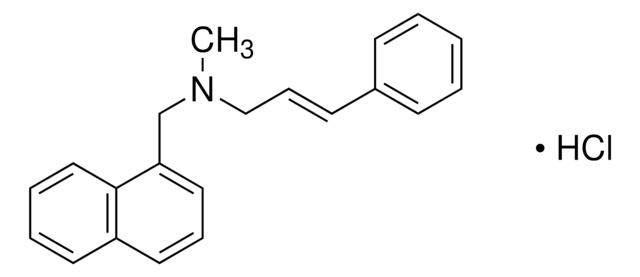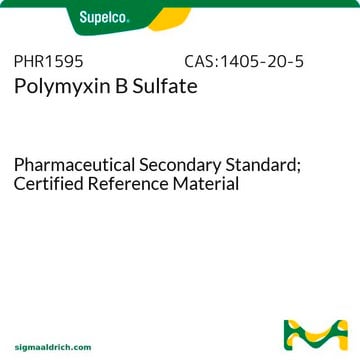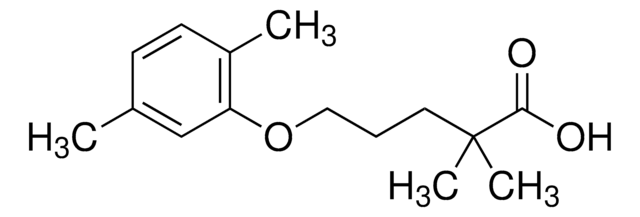N1790
Naftifine hydrochloride
Synonym(s):
Naftifine HCL
About This Item
Recommended Products
Assay
≥99%
form
powder
solubility
ethanol: soluble 50 mg/mL
antibiotic activity spectrum
Gram-negative bacteria
Gram-positive bacteria
fungi
yeast
Mode of action
cell wall synthesis | interferes
enzyme | inhibits
storage temp.
2-8°C
SMILES string
Cl.CN(C\C=C\c1ccccc1)Cc2cccc3ccccc23
InChI
1S/C21H21N.ClH/c1-22(16-8-11-18-9-3-2-4-10-18)17-20-14-7-13-19-12-5-6-15-21(19)20;/h2-15H,16-17H2,1H3;1H/b11-8+;
InChI key
OLUNPKFOFGZHRT-YGCVIUNWSA-N
Looking for similar products? Visit Product Comparison Guide
Application
Biochem/physiol Actions
Other Notes
Storage Class Code
11 - Combustible Solids
WGK
nwg
Flash Point(F)
Not applicable
Flash Point(C)
Not applicable
Certificates of Analysis (COA)
Search for Certificates of Analysis (COA) by entering the products Lot/Batch Number. Lot and Batch Numbers can be found on a product’s label following the words ‘Lot’ or ‘Batch’.
Already Own This Product?
Find documentation for the products that you have recently purchased in the Document Library.
Our team of scientists has experience in all areas of research including Life Science, Material Science, Chemical Synthesis, Chromatography, Analytical and many others.
Contact Technical Service








